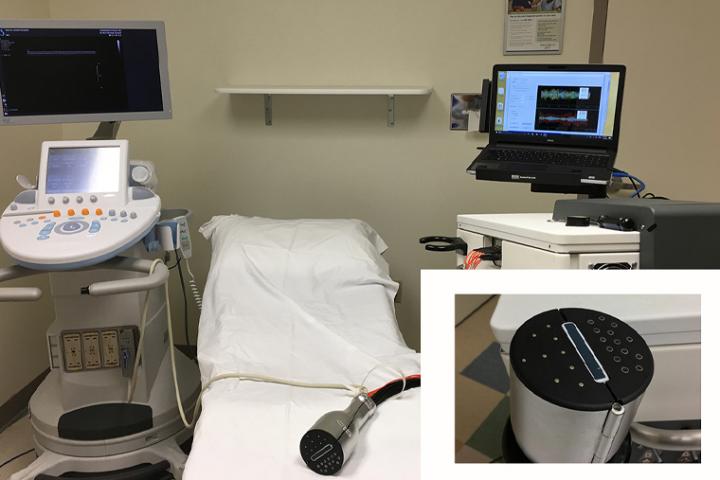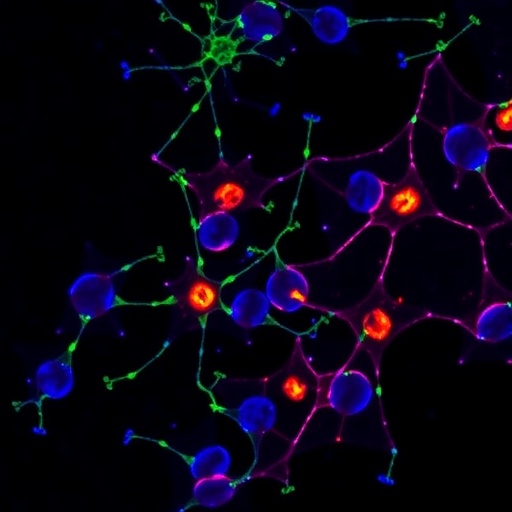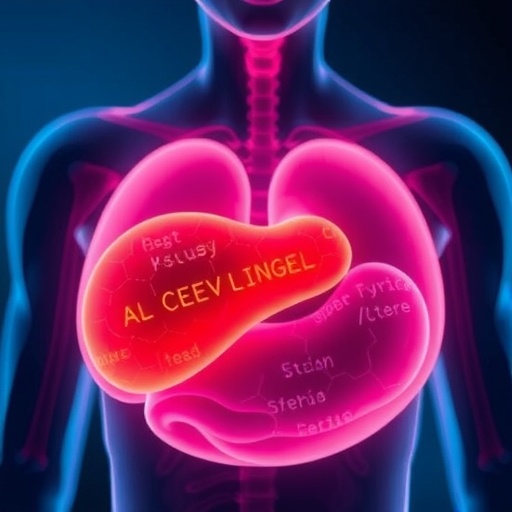Early prediction of treatment efficacy may help improve quality of life for people with breast cancer
While early detection of breast cancer is critical, early prediction of how well the neoadjuvant chemotherapy treatment before surgery is working also may provide a window of opportunity when treatment could be altered and have a big impact on the patient’s quality of life.
An interdisciplinary team of researchers at Washington University in St. Louis has found that combining data from tumor biomarkers, ultrasound, and ultrasound-guided diffuse optical tomography (DOT) after a patient’s first cycle of pre-surgical neoadjuvant chemotherapy provided a highly accurate prediction of how the tumor was responding to the treatment. The results from a clinical trial at Washington University School of Medicine and Barnes-Jewish Hospital were published online in Breast Cancer Research and Treatment May 10, 2021.
Quing Zhu, professor of biomedical engineering in the McKelvey School of Engineering and of radiology at the School of Medicine, led a team of engineers and radiologists in the three-year clinical trial involving patients with various types of breast cancer, including triple-negative breast cancer, human epidermal growth factor receptor 2 (HER2+), and estrogen receptor-positive/human epidermal growth factor 2 negative (ER+/HER2-). By conducting imaging after the first cycle of neoadjuvant chemotherapy, which ranges from two to three weeks depending on the type of treatment regimen used, Zhu said. The prediction model based on tumor biomarkers and imaging parameters can predict how well the cancer is responding.
“We found that the tumor biomarkers and near-infrared and ultrasound imaging parameters together would be the best earlier predictors to give us an area under the receiving operating curve, or AUC, of 0.94,” said Zhu, a pioneer of combining ultrasound and near-infrared imaging modalities for cancer diagnosis and treatment assessment. “If we extended the imaging to the end of cycle 3 of neoadjuvant treatment, 1 1/2 to two months into the six-month treatment period, the prediction can reach AUC 0.97, the best in the literature regarding monitoring neoadjuvant chemotherapy treatment response.”
In the study, 38 women patients with breast cancer underwent ultrasound and ultrasound-guided DOT prior to beginning neoadjuvant chemotherapy, at the end of each of the first three treatment cycles and prior to surgery. The DOT system consists of a 10-centimeter handheld probe and a near-infrared system developed in Zhu’s lab that takes data noninvasively from the breast from nine sources and 14 detectors in less than 4 seconds.
“In this technology, the near-infrared light is delivered to the breast tissue and gets absorbed by the tumor,” Zhu said. “If there is no tumor, there will be a stronger reflection of the light back to the breast tissue surface. Using a tomography image reconstruction algorithm, the tumor absorption map can be reconstructed, and the total hemoglobin concentration can be computed from absorption maps of multiple optical wavelengths. Total hemoglobin concentration is directly related to tumor vasculature. This technology is very sensitive, and light penetration depth can reach 4 centimeters to 5 centimeters, but the resolution is low, so we couple it with the ultrasound to improve the resolution.”
Through this dual-modality combination, the researchers can determine if the vasculature, or blood vessel network, of the tumor is reducing and the tumor size is shrinking, which predicts a good treatment response, Zhu said. Otherwise, the tumor may not respond to treatment, and physicians may consider either early surgery or change to a different treatment regimen to improve patient treatment outcomes.
Going forward, Zhu would like to make the DOT system smaller so that it can be used at the patient’s bedside in the infusion clinics. Eventually, she would like to integrate it with an existing ultrasound machine, which is compact and low-cost, to provide a dual-modality imaging assessment. She is working with the university’s Office of Technology Management to commercialize the technology, which has US Patents pending.
“We could image the patient right before treatment and at early treatment cycles to help physicians decide who is responding and who is not responding,” she said. “If we can decide this early on, we don’t have to continue to give the patient the toxic chemotherapy drugs and find out at the end of treatment that tumors do not respond to the drugs.”
###
Media Contact
Brandie Jefferson
[email protected]
Original Source
https:/
Related Journal Article
http://dx.





